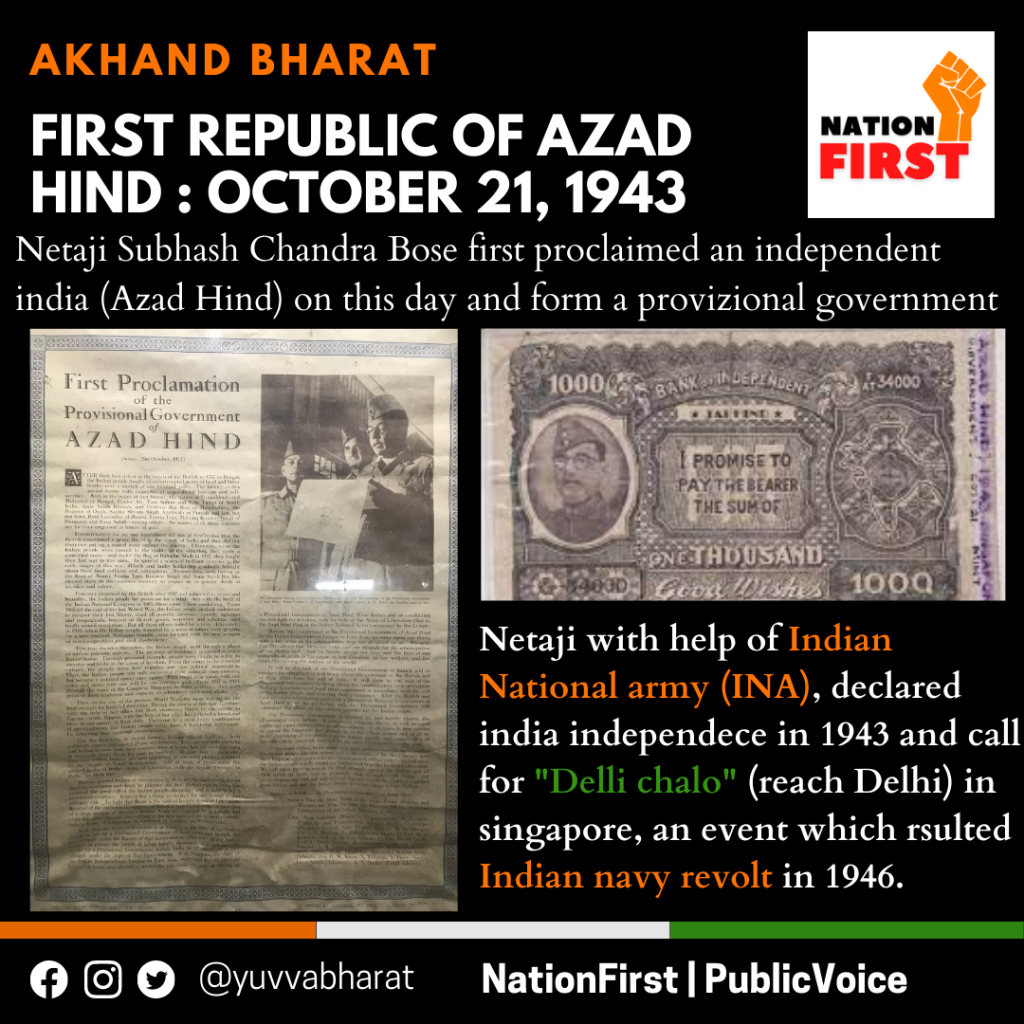Kittur Rani Chennamma, the Queen of Kittur, was one of the first Indian rulers to lead an armed rebellion against the British East India Company in 1824, against the implementation of the Doctrine of Lapse. She was born in 1778, 56 years before the 1857 revolt led by Rani Lakshmi Bai, thus becoming the one of the first women freedom fighters to have fought against the British rule in India.
Her rebellion against the British ended with her imprisonment, however, she became a celebrated freedom fighter in the state of Karnataka and a symbol of the independence movement in India. Since 1824, ‘Kittur Utsava’ has been organised every year in the month of October to celebrate the heroic rebellion of Rani Kittur Chennamma.
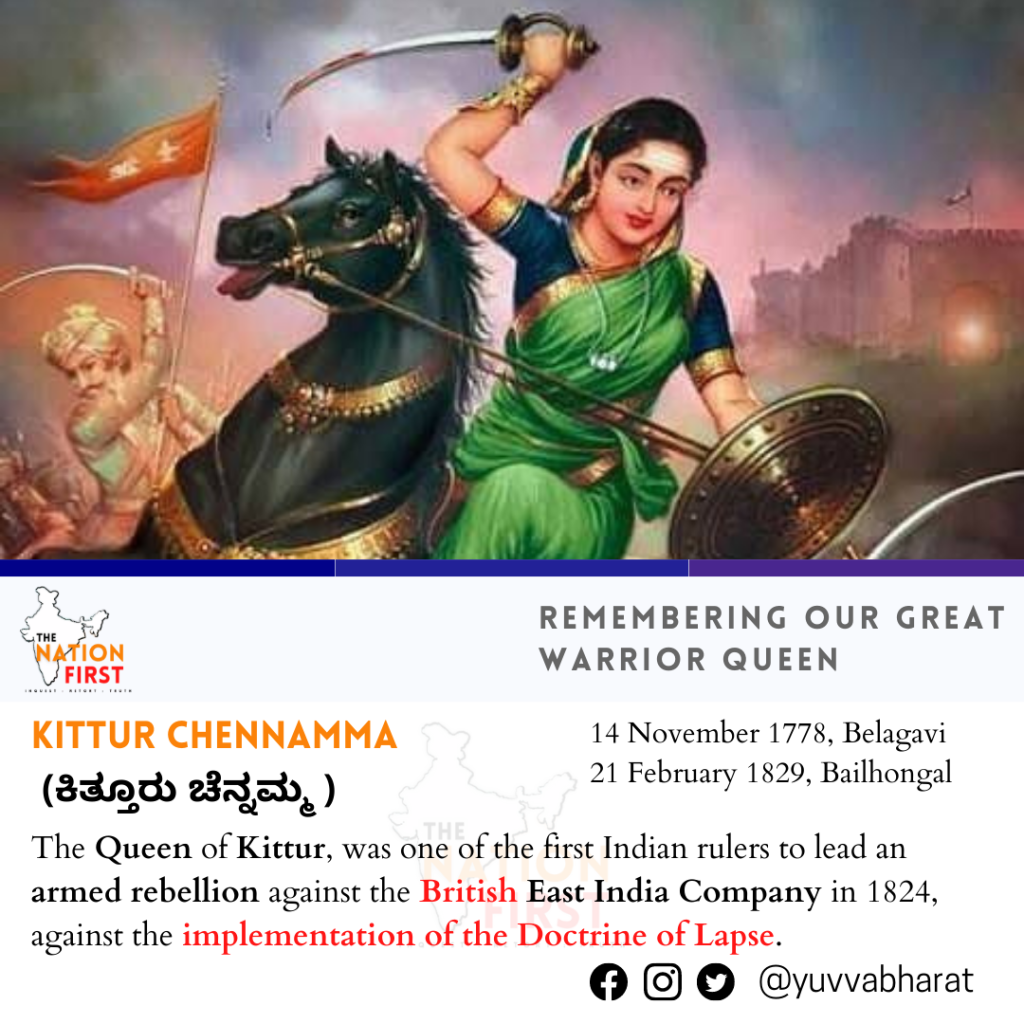
Do you know who is Kittur Rani Chennamma ?
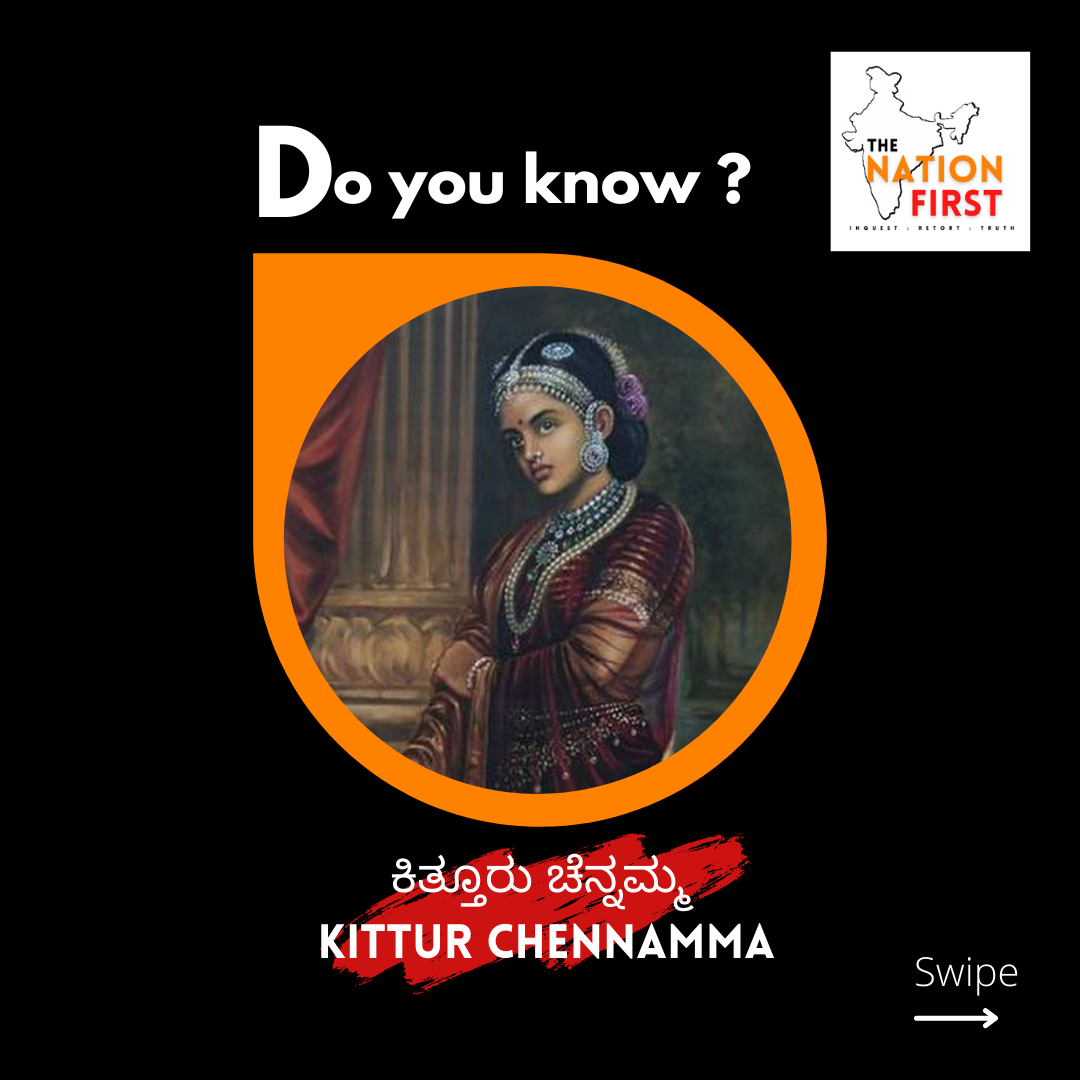
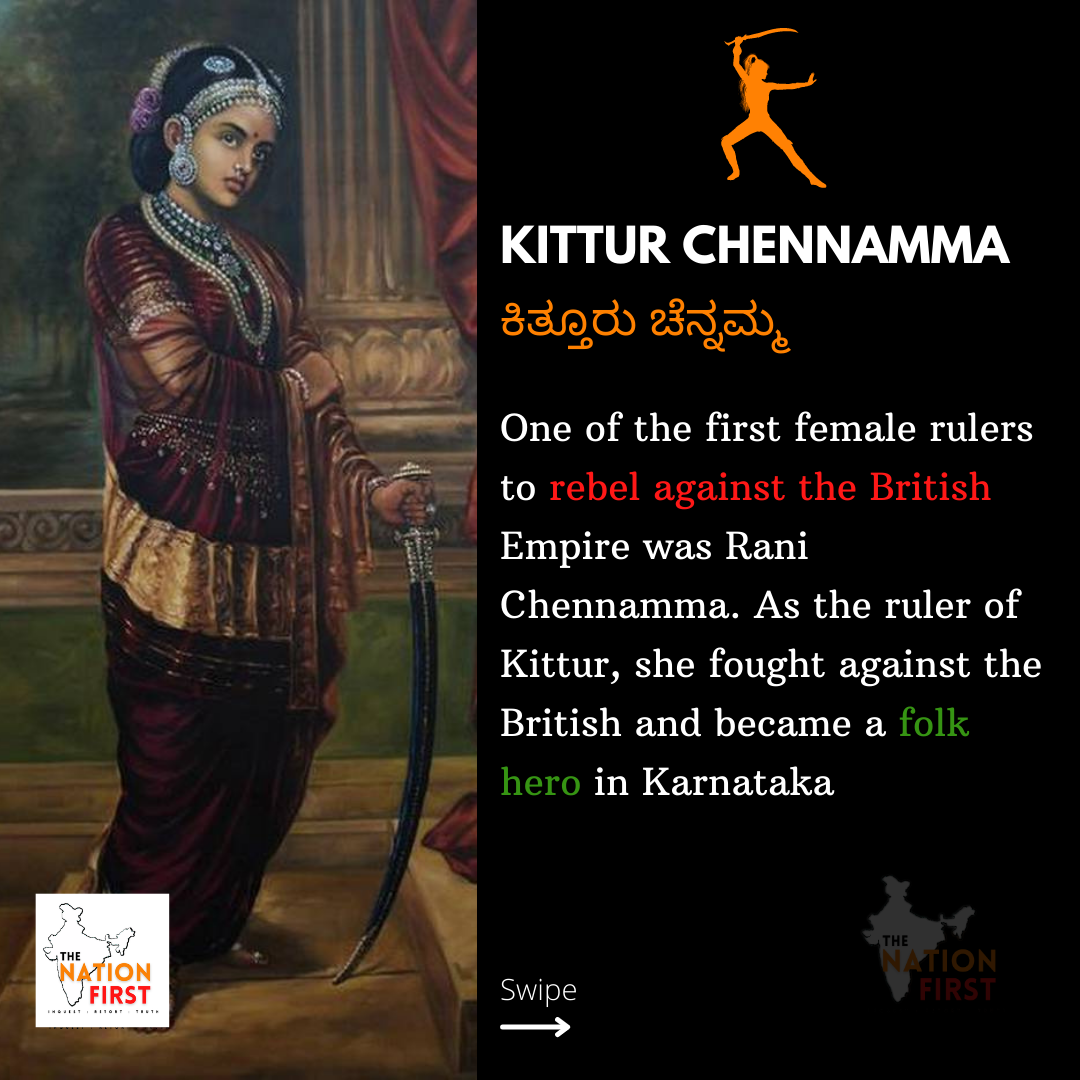
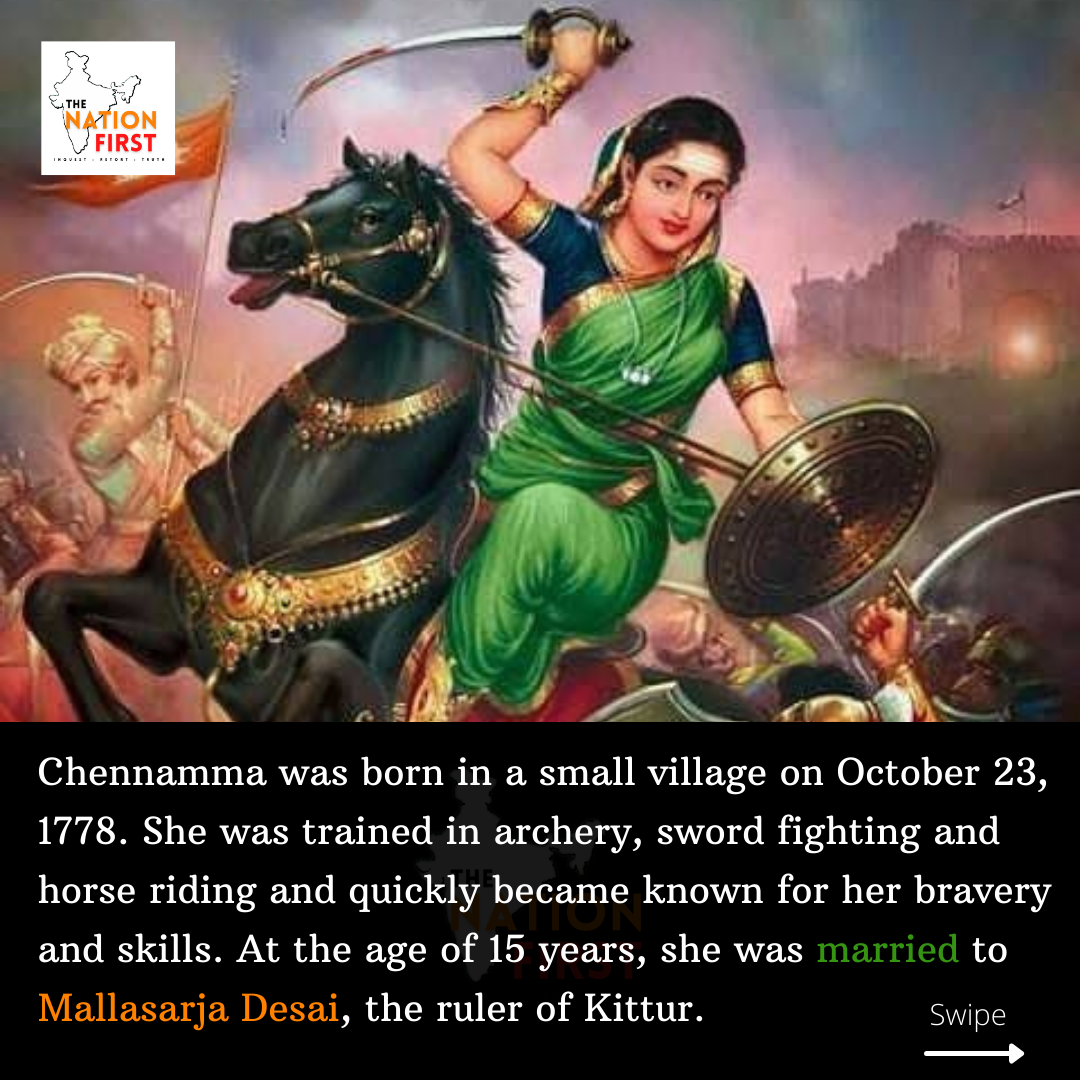
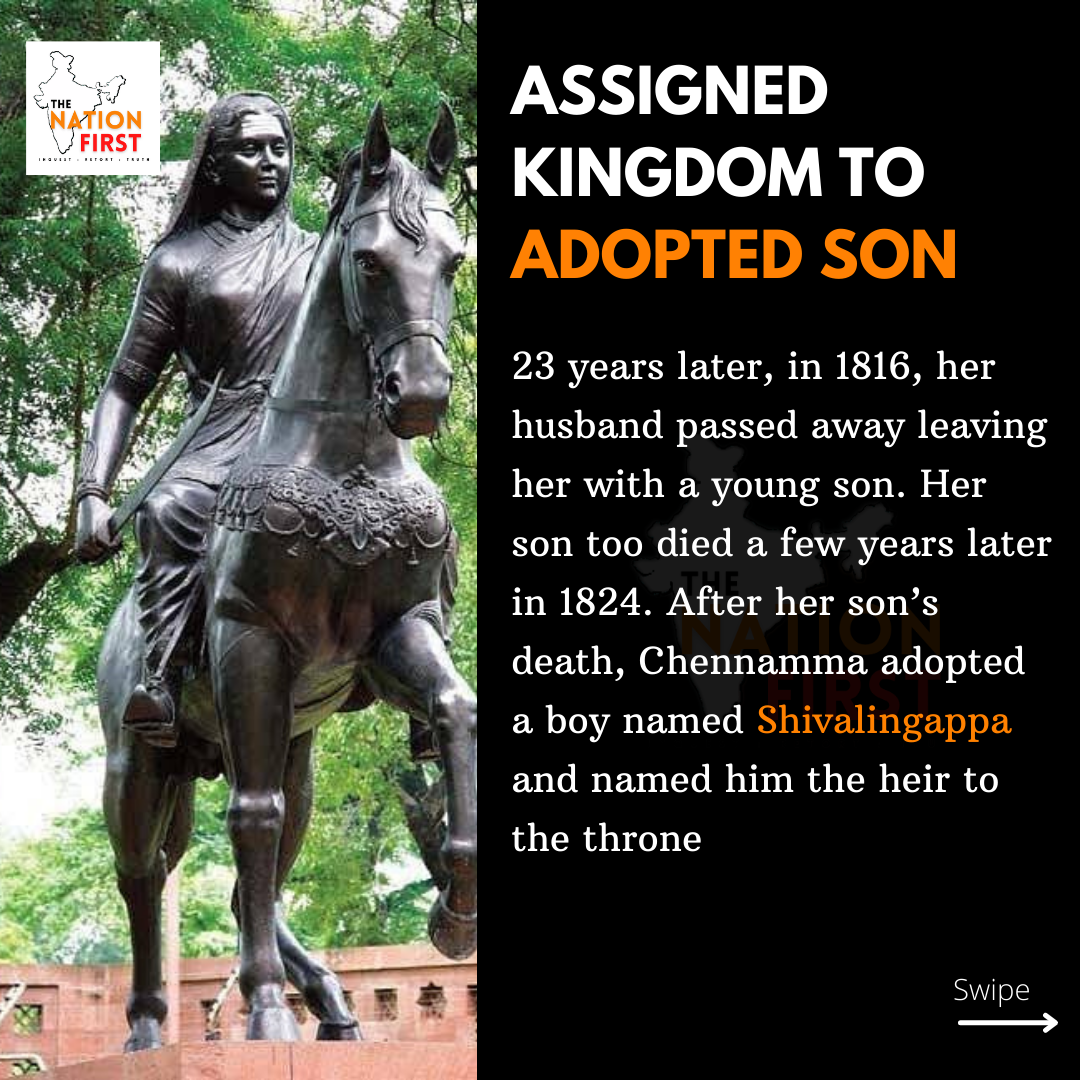
- Chennamma was born in a small village called Kakati in Belagavi (Belgaum) District, Karnataka.
- At the age of 15, she became the queen of Kittur (a taluk in present Belgaum) when she married the king of Kittur, Raja Mallasarja.
- Her husband died in 1816 leaving her with one son and heir to the throne. Unfortunately, the boy died in 1824. Chennamma adopted another boy Shivalingappa and made him the heir to the throne. The East India Company, however, did not recognise the adopted heir and proceeded to annex the kingdom. The Doctrine of Lapse, although codified later by Lord Dalhousie, was practised by the Company earlier also.
- Rani Chennamma rejected this illegitimate doctrine and refused to accept British sovereignty.
- She took up arms (she was trained in sword fighting, archery and horse riding from her childhood) and instigated a war with the company in 1824.
- Thus, her rebellion predated the Indian Revolt of 1857 by three decades.
Kittur Rani Chennamma vs the British
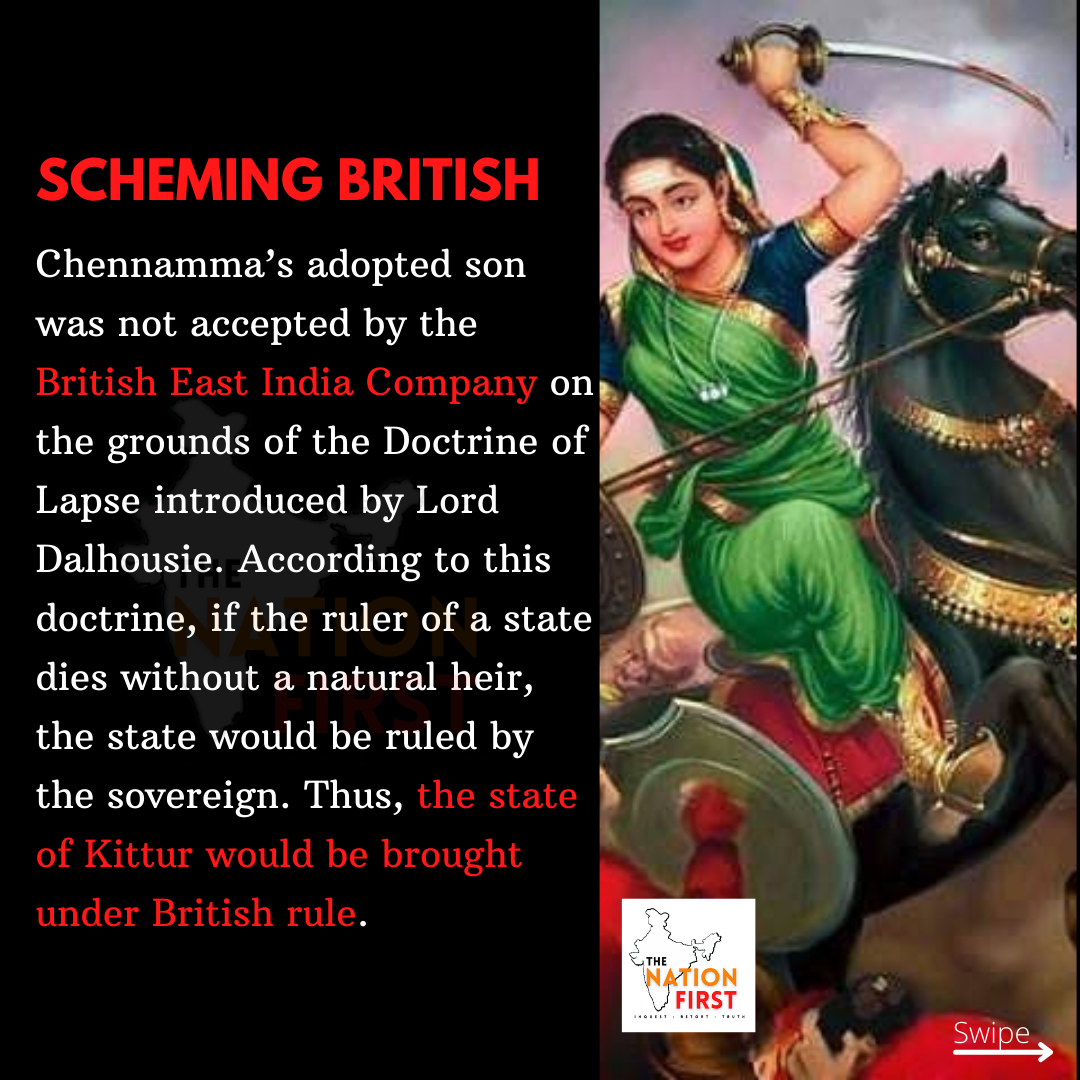
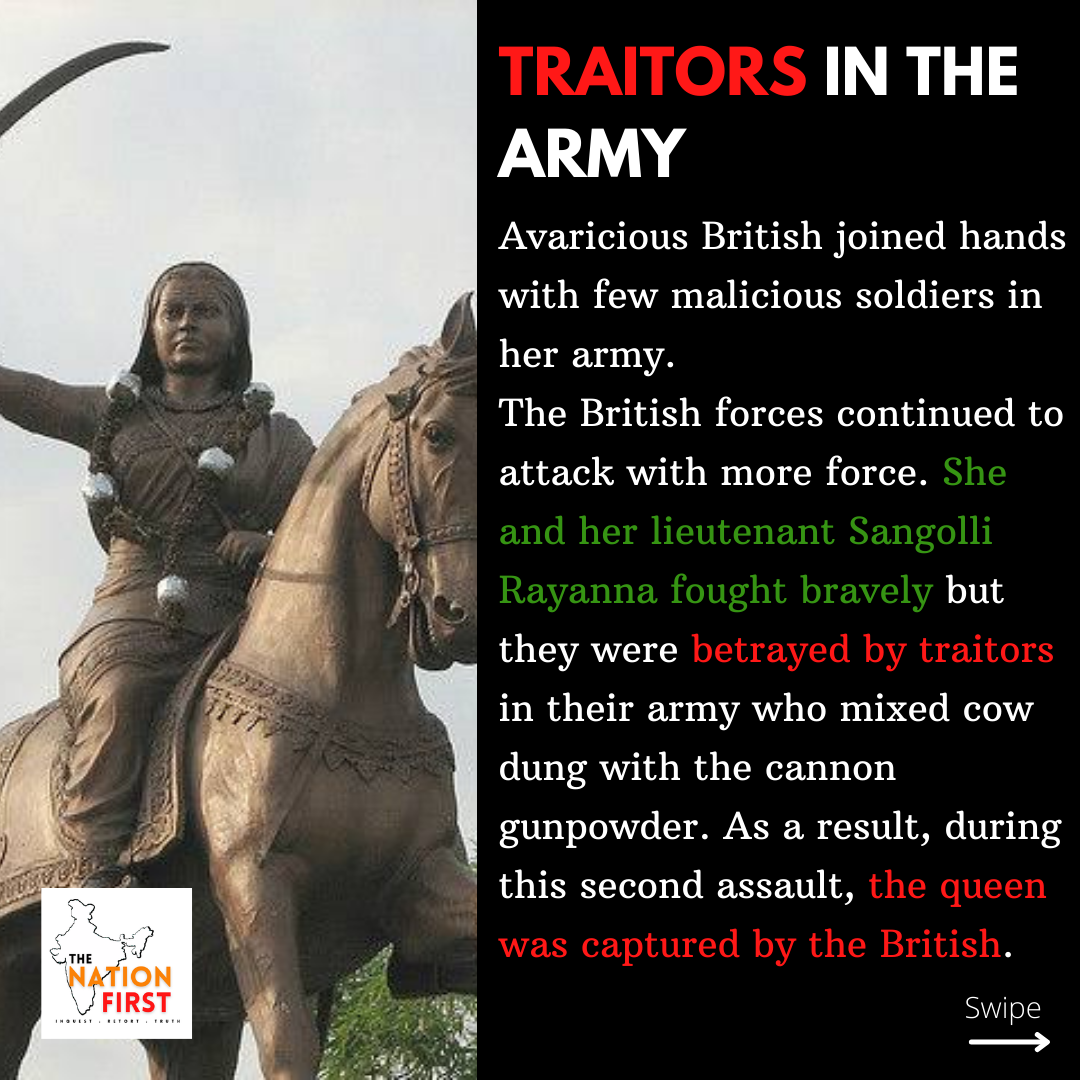
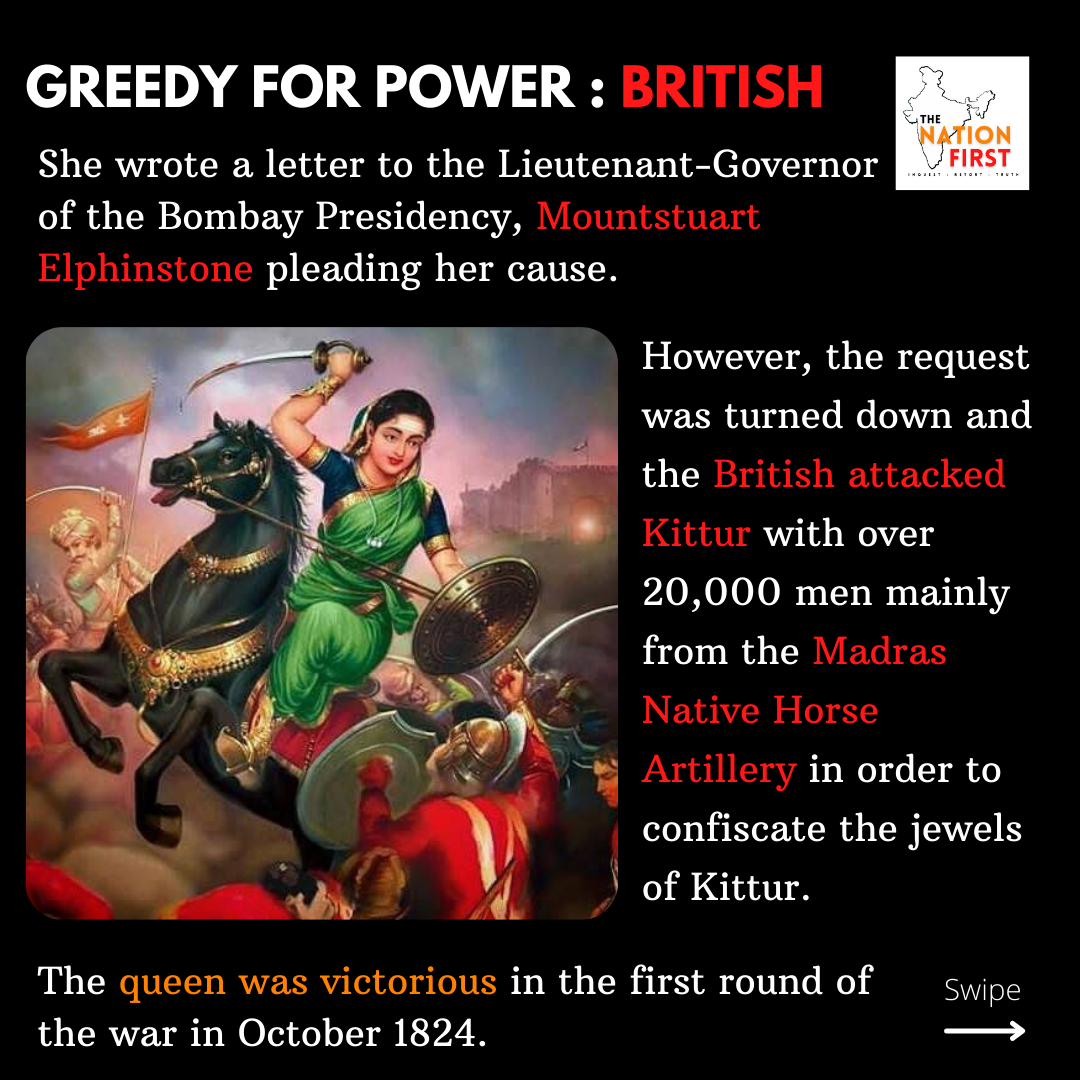
The British East India Company did not take lightly to Chennamma’s act and ordered Shivalingappa’s exile from the kingdom. This was done under the pretext of the Doctrine of Lapse, according to which adoptive children of native rulers were not allowed to be named their successor and if the native rulers did not have children of their own, their kingdom would become a territory of the British Empire. The Doctrine of Lapse was officially codifiedbetween 1848 to 1856 by Lord Dalhousie.
Kittur Chennamma, however, defied the British order to expel Shivalingappa from the throne. She sent a letter to the Governor of Bombay to plead the cause of Kittur but Lord Elphinstone turned down Chennamma’s request. The state of Kittur came under the administration of Dharwad collectorate in charge of Mr. Thackeray, and Mr. Chaplin was the commissioner. Both men did not recognise Chennamma as the regent and Shivalingappa as the ruler and apprised Rani Chennamma to surrender her kingdom, but she again defied the British order. This led to the breakout of a war.
- The British attacked Kittur with more than 20000 men and about 400 guns. They attempted to raid Kittur and take its jewels and treasures (valued at Rs.15 lakh) but failed.
- The first battle between Kittur and the East India Company started in October 1824 and it resulted in a heavy loss for the company.
- The English Collector and political agent St. John Thackeray was killed in the battle by Amatur Balappa, the Rani’s lieutenant. Two British hostages were also taken by the Kittur forces. Rani Chennamma released them after the British gave her word that they would cease fighting. However, they went back on their word and restarted the war after getting the hostages back.
- The Rani was supported in her valiant war by Sangolli Rayanna and Gurusiddappa. Despite her heroic attempt, Chennamma was captured and Kittur fell to the British forces. She was imprisoned in Bailhongal Fort where she breathed her last on 21 February 1829. She was fifty years old.
- Despite leading one of the first rebellions in India against the British, Rani Chennamma of Kittur remains relatively unknown.
Legacy of Kittur Rani Chennamma
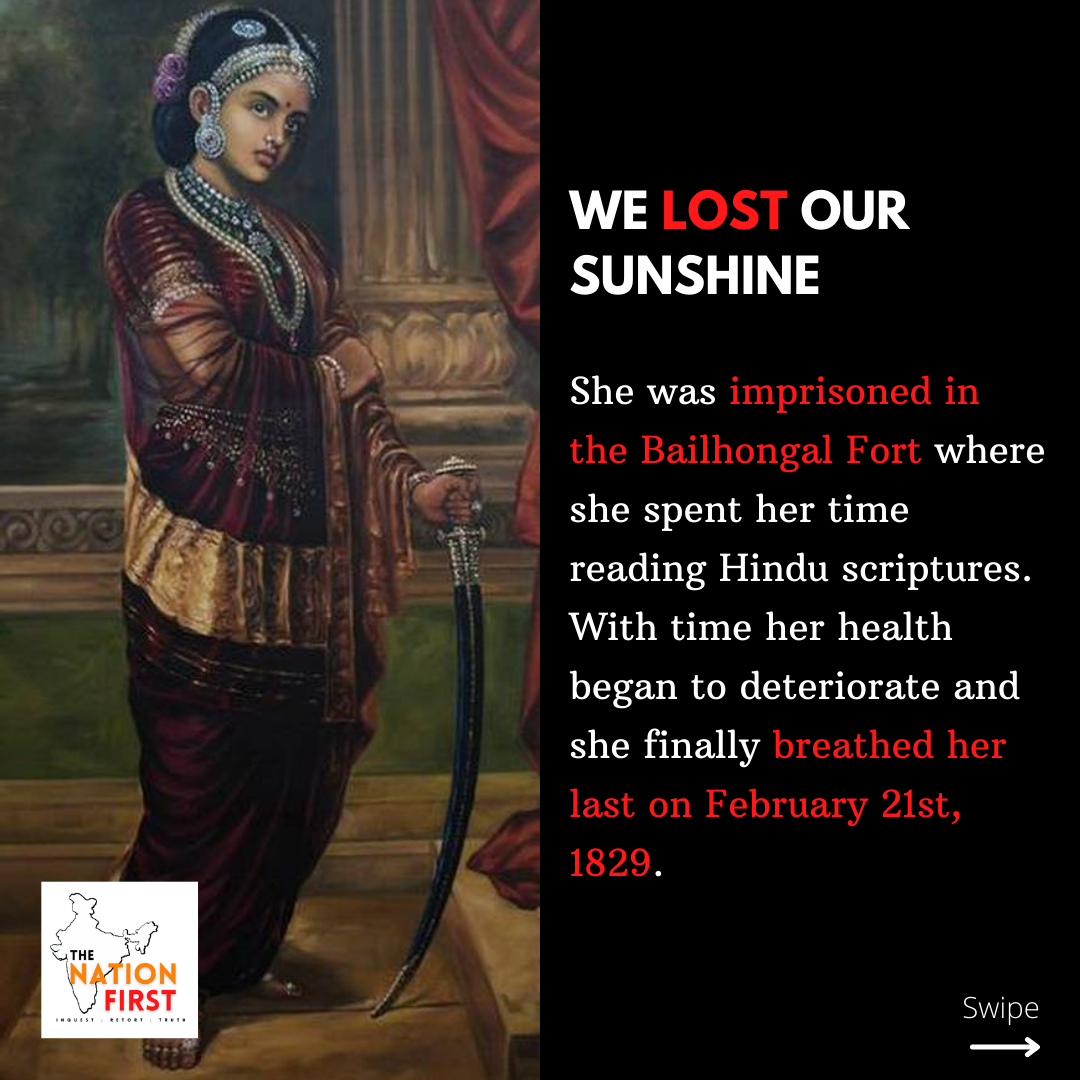
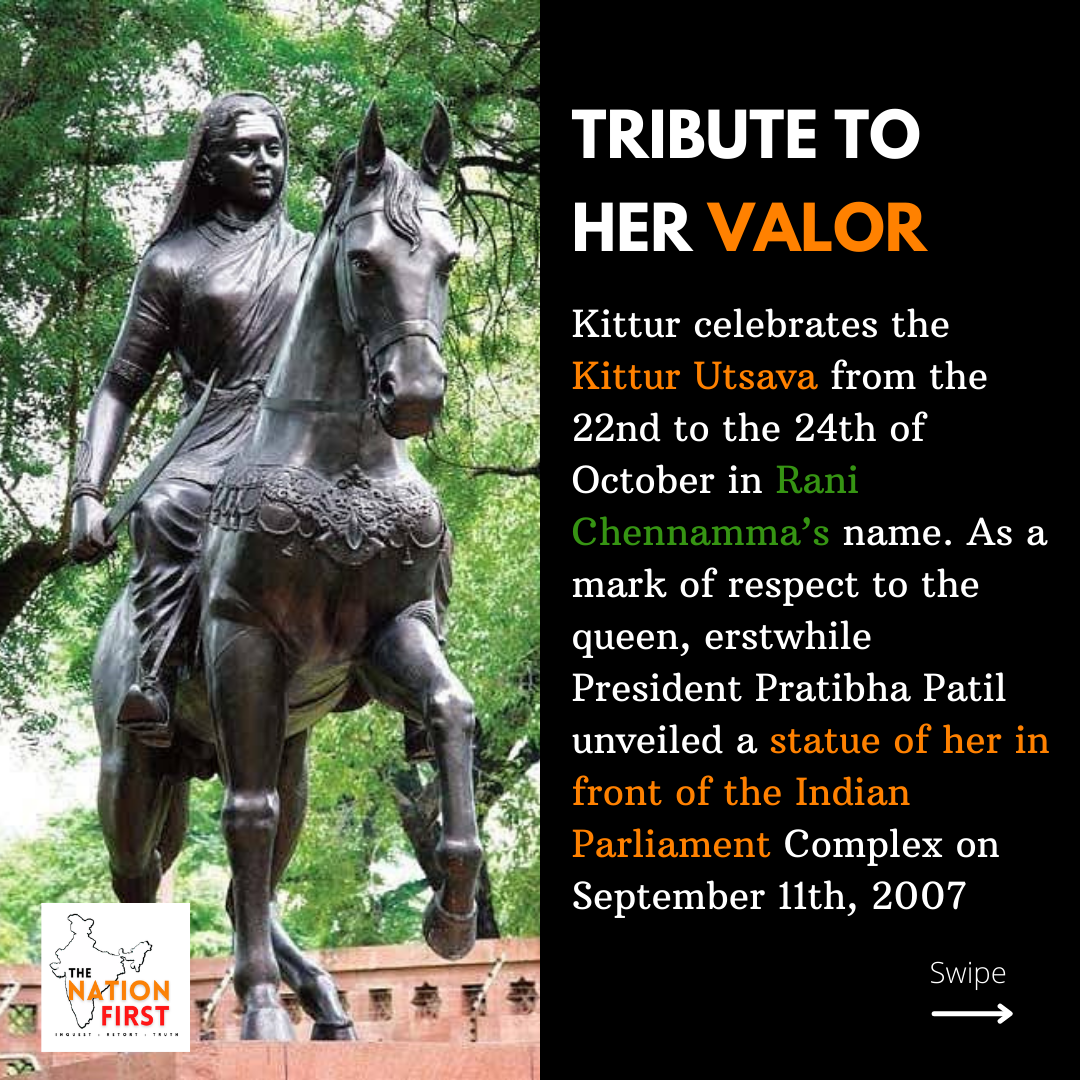
Every year, Kittur celebrates the Kittur Utsava from the 22nd to the 24th of October in Rani Chennamma’s name. As a mark of respect to the queen, erstwhile President Pratibha Patil unveiled a statue of her in front of the Indian Parliament Complex on September 11th, 2007.
Two other statues were also installed in Bangalore and Kittur. A daily train between Bangalore and Kolhapur was named after the Rani as the Rani Chennamma Express. Her life was also captured on film in the form of a historical drama film by B. R. Panthulu. The film is named Kitturu Chennamma.

